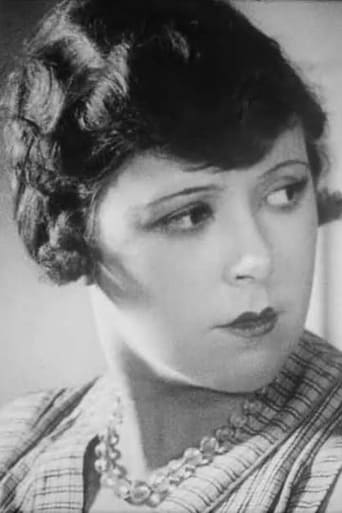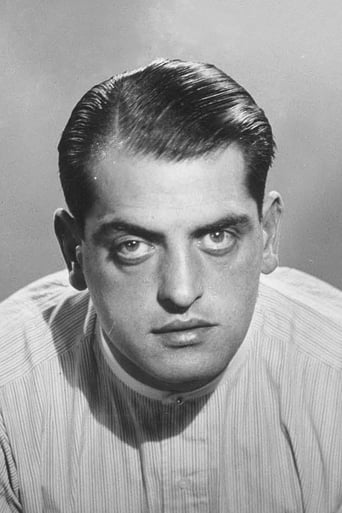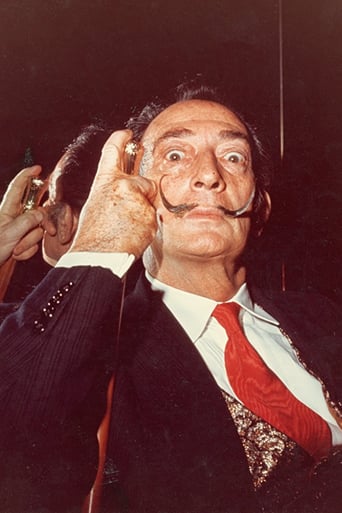Solemplex
To me, this movie is perfection.
Tedfoldol
everything you have heard about this movie is true.
Juana
what a terribly boring film. I'm sorry but this is absolutely not deserving of best picture and will be forgotten quickly. Entertaining and engaging cinema? No. Nothing performances with flat faces and mistaking silence for subtlety.
Haven Kaycee
It is encouraging that the film ends so strongly.Otherwise, it wouldn't have been a particularly memorable film
Filipe Neto
There are some films whose cultural and cinematographic value is much more related to the people involved in it than to their quality or interest as "story told". This movie is one of them. Its so repulsive and incomprehensible that only Buñuel and Dalí would be able to make it worthy of some appreciation. It often recalls some 1970s trash films, and short films made by pseudo-intellectuals, which still pollute the route of European film festivals. Thus, this film is very difficult to swallow, even by confessed connoisseurs of surrealism. Having no plot, it consists of a succession of images, often graphically provocative, highly inadvisable to sensitive people. Just that. Personally, I often compare Buñuel to Edd Wood, but maybe the latter can be even better that the Spanish director, in the sense that he, at least, managed to make some funny films.
BA_Harrison
Un Chien Andalou is 16 minutes of surreal silent film that makes less sense than painting my knackers green and setting them on fire while singing the national anthem. Director Louis Buñuel, collaborating with artist Salvador Dalí, delivers a series of perplexing images, some of which are extremely disturbing (the slicing of a woman's eye with a straight razor), some of which are daring (the fondling of a naked pair of breasts and a bare ass), and many of which are downright bizarre (a man pulling two pianos weighed down by dead donkeys and a pair of priests!?!).Other memorable imagery includes ants crawling out of a hole in the palm of a man's hand, an androgynous woman poking a severed hand with a stick, and a guy losing his mouth only to have it replaced by the pubic hair from a lady's armpit. Almost impossible to rate since I had no idea what any of it meant, hence my non-committal score of 5/10.
sunheadbowed
Some believe that horror lies in the unknown: the monsters, ghosts, werewolves, aliens and psychopaths of our imaginations, but others realise that true horror lies in what we do know, what we're forced to know: the everyday repressive and oppressive sexual and social atmosphere of normal daily life; the smothering banality of a repetitive existence.Luis Buñuel and Salvador Dalí were anything but banal. Their masterpiece of Freudian surrealism, 'Un Chien Andalou' presents for your enjoyment the bizarre world of 'sex' -- lust versus fear; boredom versus insanity; guilt versus freedom; the male versus the female. Being a sexual male is a terrifying, oppressive, confusing and painful experience; being a sexual woman is even more so. 'Un Chien Andalou' successfully painted this age-old picture in a daring new language.Whether a grinning male watches from his window as an androgynous woman with a severed hand in a box is mowed down by a car, or a woman shuts her aggressively advancing partner's hand in the door to trap him (a hand which is bleeding ants, stigmata-style), or a man is chastised for his lust by a father-figure (who is revealed as the woman's new lover and is shot to death by the original) -- or whether, infamously and iconically, a hand (Buñuel's, in a brief cameo) slashes a woman's eyeball from its socket (is the razor the penis and the eyeball the hymen?), this film's tone is one of extreme sexual anxiety. It's the same unbearable universe of queasy, uncomfortable dream logic angst that David Lynch borrowed from Buñuel and turned up to ten for his horrifying and often misunderstood 'Eraserhead', almost half a century later. But it's no more weird, really, than a cloud passing by the moon. But it's as violent as a razorblade to the eye.Luis Buñuel once said, "If someone were to tell me I had twenty years left and ask me how I'd like to spend them, I'd reply, 'Give me two hours a day of activity, and I'll take the other twenty-two in dreams'." It's a shame that this unforgettable dream of his lasts for only seventeen minutes.
Joseph Pezzuto
"Once upon a time..." Spanish director Luis Buñuel's directorial debut 'Un Chien Andalou' (An Andalusian Dog), collaborated with the prominent artist and close friend Salvador Dali, is a seventeen-minute silent, stark and surrealist film. Initially released in 1929 with a limited showing at Studio des Ursulines in Paris, the film became popular and ran for eight months afterwards. After eight, nearly nine decades, does the short still manage to provoke rather that to please? Let's take a look.The idea for this film arose at the time when Buñuel was working as an assistant director for Jean Epstein in France. Buñuel told his then-inseparable friend in a restaurant one day about a dream he had in which a cloud sliced the moon in half "like a razor blade slicing through an eye." Dali then responded that he had dreamed of a hand crawling with ants. He would later go on to paint this in one of the most renowned and famous works or surrealist art 'The Persistence of Memory" in 1931, in which one can see in the lower left corner of the portrait an orange clock covered in black ants meant to represent decay. Excitedly, Buñuel responded to Dali, "There's the film, let's go and make it!" The entire film plays out as a dream, albeit not a pleasant one, as uncanny images appear and disappear only to be followed by even more bizarre ones moments afterwards: a thinly-veiled cloud cuts across the moon as a straight razor cuts through the eye of a middle-aged woman (Simone Mareuil), although it was actually a calf's eye in reality. A cross-dressing nun on a bicycle, a severed hand lies in the street as spectators look on; a young woman allows herself to get run over; ants crawl out of a hole in a human hand; a Death's-head Hawkmoth flutters on the wall; a young man (Pierre Batcheff) pulls a rope of which attached are two tablets of stone (the Ten Commandments), two confused priests (one of them Dali) and two pianos atop which lie rotting donkey corpses. This represents the young man's religion of him trying to pursue the woman but that it gets between them and the dead livestock represent that their relationship could only end in the same manner as the unfortunate beasts of burden. Many gaps of time play throughout the picture as well, as we jump from one point to another without really knowing where we are or how we got there. All we as the audience can do is wait the horrorshow to run its course, one of which we wish would end but somehow is a place we can't look away from nor forget.The audacious but cautious young director had previously filled his pockets with stones to throw at the audience upon his film's completion so that he could make a clean getaway. However, Buñuel's film was praised upon its first debut in Paris. Dali and Buñuel became the first filmmakers to be officially welcomed into the ranks of the Surrealists by the movement's leader André Breton. Mocking everything right and proper in art at the time, 'Un Chien Andalou' broke barriers on a new ground of filmmaking for aspiring auteurs to create new ideas to shock and stun with the power of cinema. Dali left Buñuel due to disagreements on the director's next project 'L'Age d'or' (1930), but Buñuel had made his first provoking picture and his reputation onwards would eventually make him one of Spain's most famous and respected directors.





